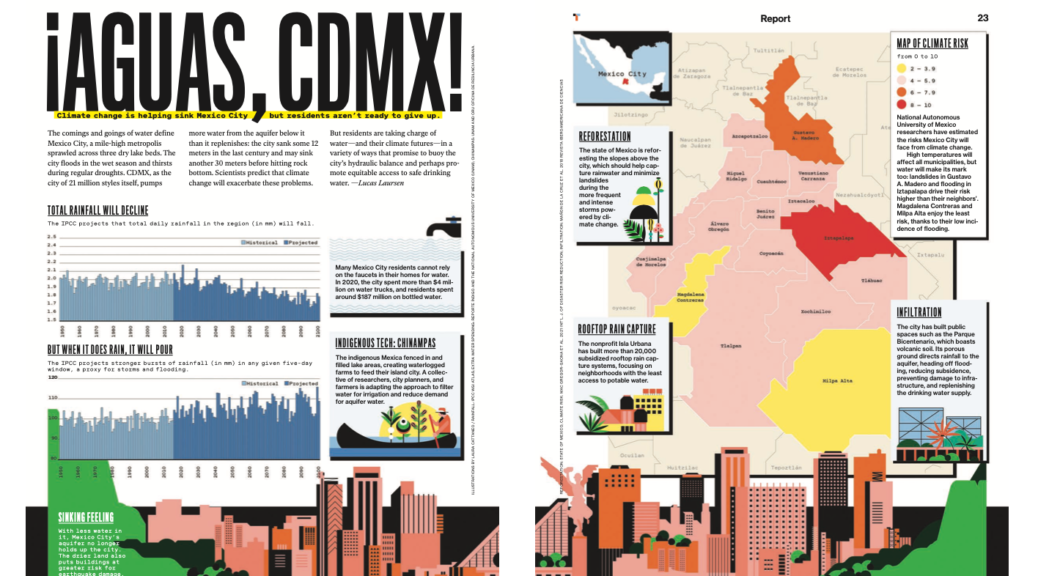The next generation of cellphone networks won’t just be 5G or 6G—they will be zero g. In April, Lynk Global launched the first direct-to-mobile commercial satellite, and on 15 August a competitor, AST SpaceMobile, confirmed plans to launch an experimental direct-to-mobile satellite of its own in mid-September. Inmarsat and other companies are working on their own low Earth orbit (LEO) cellular solutions as launch prices drop, satellite fabrication methods improve, and telecoms engineers push new network capabilities.
Continue reading Space 5G Is On the LaunchpadTag Archives: Development
¡Aguas, CDMX!
This is my first piece of data visualization journalism in a long time. It was fun to work with the editors and illustrator to bring it together. It’s also great to cover a topic near to my heart and the part of my family that live in Mexico City. Someday I’d like to report more on the social side of Mexico’s water situation.
Meantime, I recommend checking out the print edition of Technology Review [pdf] to see the spread but there is also an online version for subscribers.
Countries Debate Openness of Future National IDs
Kenya’s High Court ruled Thursday that a recent amendment requiring citizens to register for a national biometric digital identification system overreached on some counts, such as allowing for links to DNA or GPS records, and failed to guarantee sufficient inclusion of Kenyan residents.
The ID system, called the National Integrated Identity Management System (NIIMS), was a homegrown answer to India’s pioneering Aadhaar system, which two years ago faced its own Indian Supreme Court ruling that upheld some components while modifying others.
More than half of African countries are developing some form of biometric or digital national ID in response to major international calls to establish legal identification for the almost 1 billion people who now lack it. But this ID boom, also taking place outside Africa, often gets ahead of data protection laws, as occurred in Kenya.
Continue reading Countries Debate Openness of Future National IDsTaming the genie in the forest of the devil’s trees
It wasn’t long after the cairns appeared in the forest that women from surrounding villages began using them in a purification rite that ended in leaving underwear on the stone mounds. The cairns were new to the forest, but the women’s purification rite was not. In the ritual, older Berber women guided younger women into the forest, and the younger women washed themselves under the open sky and prepared their spirits for finding a lover. Forest rangers had built the cairns to mark the borders of Morocco’s national forests. They were designed to protect argan trees – which some Berber call the “tree of the devil” – from use and harvesting. But the local women turned the cairns into something else.
When Morocco’s government established Souss-Massa National Park in 1991, the Berber people were already familiar with temporary prohibitions on forest use, says anthropologist Romain Simenel of the Institute of Research for Development in Marseille, France. But they were accustomed to setting the prohibitions themselves, through a system called agdal, which involves religious stories laden with mischievous genies who curse parts of the forest, and community rituals that reopen the way to harvesting or grazing among the argan trees.
Instead, national authorities were now insisting on prohibiting access to a core zone of the argan forest, allowing limited access to a second zone, and leaving a third zone to more community-led use. They sought to protect the forest from both desertification and local land management decisions. But the genies in the argan forest are not easy to tame.
Continue reading Taming the genie in the forest of the devil’s trees
